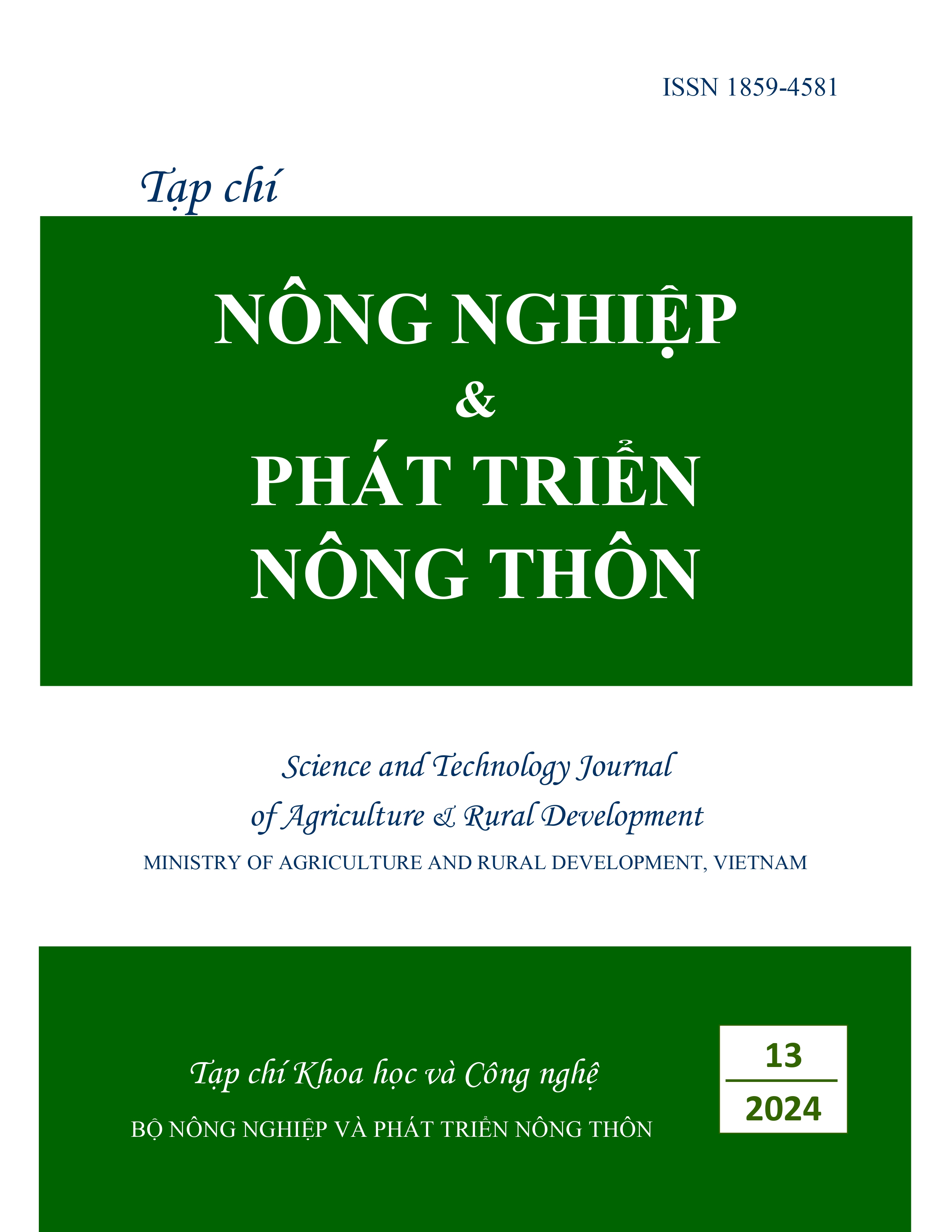Effect of neutral detergent fiber levels in diets on feed intakes and nutrient digestibility of crossbred Boer goat
DOI:
https://doi.org/10.71254/62bd7k88Keywords:
Crossbred Boer goats, digestibility, intake, neutral detergent fiber, nitrogen retentionAbstract
The aim of this study was to evaluate the effects of different levels of neutral detergent fiber (NDF) in the diets of growing crossbred Boer goats (♂ Boer x ♀ Bach Thao) on feed intakes, nutrient digestibility, ruminal fermentation and nitrogen retention. Four crossbred Boer at 3 months of age 15.6 ± 0.82 kg of live weight, were arranged in a 4 x 4 Latin square design. Each period lasted 21 days, in which 15 days for adaptation and 6 days for sample collection. Goats were provided a basal diet containing 14% crude protein and metabolizable energy of 9.8 MJ/Kg dry matter (DM). Diets were developed by increasing levels of NDF in the diets at 40, 44, 48 and 52% DM, corresponding to NDF40, NDF44, NDF48 and NDF52. The results showed that DM intakes was greater (P<0.001) in goats fed 40% NDF (537 g/day) compared with goats fed 52% NDF (422 g/day). Digested DM showed higher (P<0.01) values (325 - 335 g/d) in goats fed 40 - 48% NDF compared with those fed NDF52 (270 g/d). Diets had no effect (P>0.05) on ruminal fermentation products; however, nitrogen retention showed a higher tendency (P=0.057) in NDF40 goats (7.75 g/day) compared with NDF52 goats (5.96 g/day). Combined data suggest that increasing levels of NDF from 40% to 48% in the diets had no effect on feed intake, nutrient digestibility and nitrogen retention, but those parameters remarkably decreased when goats fed 52% NDF. The level of 48% NDF in the diet of crossbred Boer goats during 3 - 6 months of age is proper to meet feed intake requirement and to increase effectively the use of forage.






